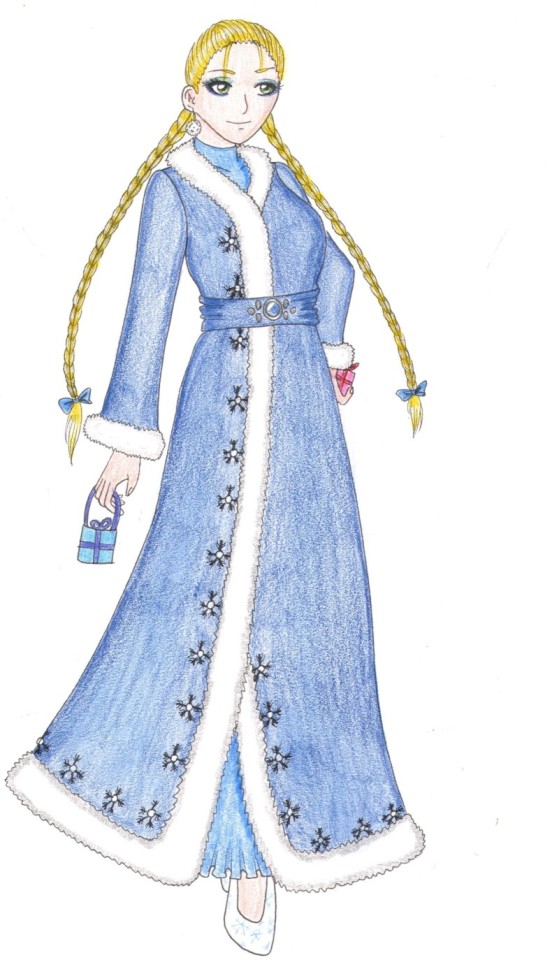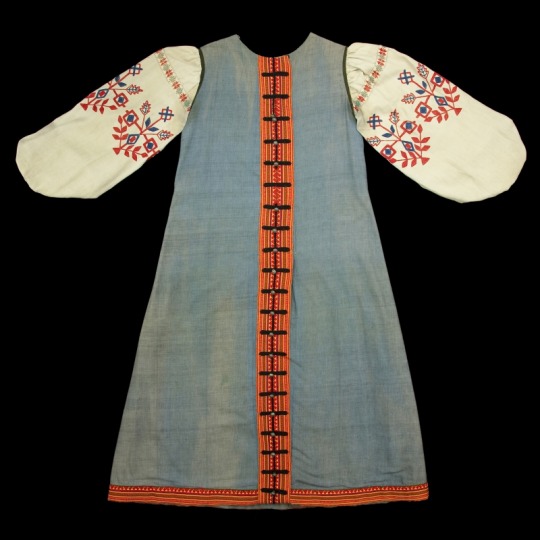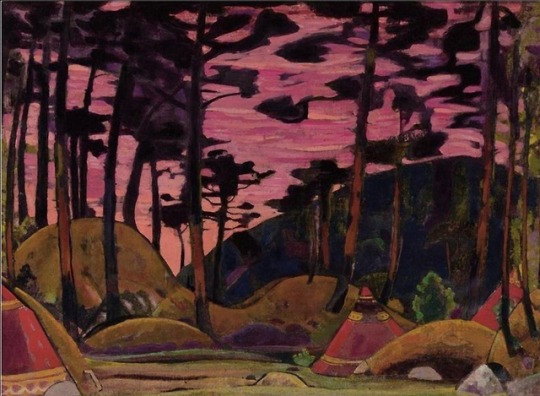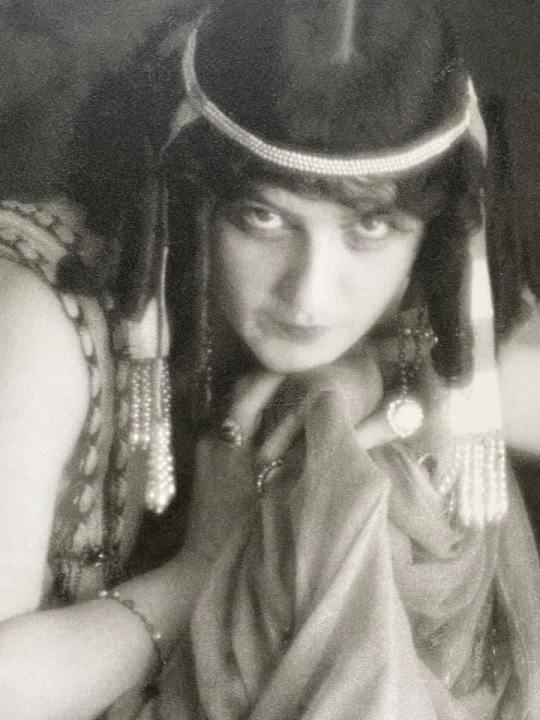#Snegourotchka
Text


Costume à venir...
Page facebook: https://www.facebook.com/4-nutty-addict-850962241666113/
#dessin#projet couture#costume#cosplay#inspiration Russie#snegourotchka#drawing#sewing project#handmade#noël#xmas#2021
2 notes
·
View notes
Photo

A couple days late for #folkxmas2021 Prompts Young girl • blue hair • snowflakes ❄️ #snegourotchka Hosts: @mauxart @sarahlena.design @kozy.illustrations @amy_b_illustrations @laura.sillustrations . . . . . . . . . . . . . . . . . . . . . . . . . #folkxmas2021 #linedrawing #illustration #drawingchallenge #sketch #drawing #dailyprompt #inkdrawing (at Kirkland, Washington) https://www.instagram.com/p/CXz_TBaLyTJ/?utm_medium=tumblr
#folkxmas2021#snegourotchka#linedrawing#illustration#drawingchallenge#sketch#drawing#dailyprompt#inkdrawing
1 note
·
View note
Link
Hop’éra ! Dessine-moi la fille de neige
Mini-série conçue par mes soins pour l’Opéra national de Paris.
2017
#motion design#animation#2D#la fille de neige#opéra#opera#paris#série#serie#photoshop#snegourotchka#anim#after effect#artists on tumblr
0 notes
Photo



The exhibition “Russian operas, at the dawn of the Ballets Russes” presents 130 costumes made for the masterpieces of Russian opera (Boris Godunov, Kovantchina, Ivan the Terrible, Snegourotchka) presented in Paris between 1908 and 1913, for the most part by Diaghilev, then reused until the middle of the 20th century at the Opéra de Paris. Costume sketches, work documents, iconographic sources of inspiration and photographs are also included.
These costumes, ranging from historic magnificence to an unequalled modernity, all come from the Opéra National de Paris, where they arrived through the flukes of history, the successes of productions and the failures of businesses, thanks to purchases from theatre houses (such as the Bolchoi) or from companies (such as those of Serge Diaghilev and Sir Thomas Beecham). They are preserved today either in the collections of the Bibliothèque-Musée de l’Opéra, BNF, or at the CNCS or also at the Nouveau Musée National de Monaco. The entire range of opera characters, historical or from legends, of Mussorgsky and Rimsky-Korsakov are represented in this collection: tsars, boyars, guards, and above all the common people of Russia, the great protagonists of Russian opera.
https://www.cncs.fr/%E2%80%9Crussian-operas-dawn-ballets...
The Ballets Russes Company, under the direction of impresario Serge Diaghilev, had a major impact on the nature of ballet in the western world from the early years of the 20th Century. Employing the most talented and creative dancers, choreographers, designers and composers, the company created spectacles of sound, colour and movement, often with an oriental or folk tale theme, that they toured throughout Europe and America.
In 1921 Diaghilev mounted ‘The Sleeping Princess’ based on the Russian Mariinsky Theatre’s ballet ‘The Sleeping Beauty’ of 1890, with Tchaikovsky’s music and Marius Petipa’s choreography, slightly adapted, and new costumes and sets by Léon Bakst. It opened on November 2nd, 1921 at the Alhambra Theatre in London with the intention of a long run; however, it was not a success and closed after a hundred and fourteen performances, having had insufficient audiences to cover the expenses of numerous costumes and ambitious sets. The costumes were impounded to cover Diaghilev’s debts to the theatre, and went into storage.
https://www.thejohnbrightcollection.co.uk/.../ballets.../
5 notes
·
View notes
Text
Upcoming: Rumor has it that the Paris Opéra’s season will be announced on March 12.
According to the Internet, new productions will include Siegfried, Götterdämmerung, Faust, The Queen of Spades, Jenufa, Fin de partie, 7 Deaths of Maria Callas, Macb*th (I’m a theater kid, okay?), Le nozze di Figaro, and Le Soulier de satin.
Revivals are projected to include: L’elisir d’amore, Aïda, Die Entführung aus dem Serail, Il trovatore, Snegourotchka, Tosca, Iphigénie en Tauride, La traviata, Carmen, Samson et Dalila, and Les Huguenots.
#and that’s on that#let’s see how much of this actually happens#but this looks exciting!#season announcement#coming soon!#paris opera#opera#opera tag
2 notes
·
View notes
Text
La donzella de neu a la ONP Fotografia de Sebastien Mathe_onp
La donzella de neu a la ONP, producció de Dmitri Tcherniakov
La donzella de neu, producció de Dmitri Tcherniakov, fotografia ©-Elisa-Haberer
Un teatre imponent i de primera categoria fa coses imponents i d’excel·lent i primera categoria. L’Opéra National de París ha programat en la temporada 2016/2017 la bellíssima òpera de Nikolai Rimski-Kósakov “La donzella de neu“.
Es tracta de la tercera de les quinze òperes que va composar el compositor rus i segons diuen, l’òpera que més estimava del seu opus, un opus farcit d’obres imprescindibles que ens hem hagut d’acostumar a prescindir-ne degut a la miopia dels programadors que insisteixen en el de sempre amb l’intent de mantenir als de sempre abonats com sempre.
A París han triat un tàndem rus per dirigir una companyia quasi exclusivament russa, garantint d’aquesta manera una idoneïtat idiomàtica i una adequació estilística que si més no atorgui autenticitat. El resultat com no podia ser d’altra manera, és un estímul cultural d’altíssim valor i un orgull per a la institució que la programa i ofereix al seu públic, per l’obra i per la manera de donar-la a conèixer.
Potser a la direcció de Mikhail Tatarnikov no tingui la grandesa que de ben segur li atorgarien Gergiev, Petrenko o Jurowski, però hi ha una bona paleta de colors en la sonoritat que l’exuberant orquestració demana i ell tot i que el discurs es torna feixuc en més d’una ocasió, dóna notorietat als grans i nombroses conjunts amb un Cor en estat de gràcia que enlluerna per la sonoritat i cohesió, en una temporada que la programació l’ha posat al límit, sabent superar tots els reptes amb una nota excel·lent.
L’extens equip vocal està encapçalat per la dolcíssima Snegúrotxka de l’emergent Aida Garifullina en la millor prestació que li he escoltat fins ara. Una veu bonica, gens forçada, d’emissió fàcil i sobretot amb una aura encisadora, té àngel.
El contratenor Yuriy Mynenko és la segona vegada, que jo sàpiga, que assumeix el rol de mezzosoprano en un rol transvestit de l’òpera russa, va ser Ratmir al Ruslanf et Ludmyla a Moscou també sota la direcció de Dmitri Tcherniakov i ara és el desitjat Lel. Canta admirablement i la veu és dolcíssima, però escènicament no és del tot creïble, hi ha una dissonància entre el físic i el cant i la interpretació que costa de superar, però és innegable que l’aposta per a un contratenor (altres vegades ho ha fet un tenor) l’apropa més a la vocalitat original.
Martina Serafin tampoc dóna el físic idoni a la jove Kupava, però vocalment està molt més convincent que en les incursions en els exigents i poc apropiats rols de soprano dramàtica verdiana que han malgastat la seva sumptuosa veu. Aquí està esplendorosa i passional.
Qui havia de ser l’original holandès liceista, el baríton Thomas Johannes Mayer es fa càrrec del rol de Mizguir amb contundència vocal i escènica. mentre que el tenor Maxim Paster tot i complir vocalment amb el rol, no dóna credibilitat escènica al Tsar Berendeï, és clar que la credibilitat escènica en els muntatges de Tcherniakov aviat salta pels aires gràcies a la fascinant i trencadora dramatúrgia.
No m’han convençut gaire La fada primavera d’Elena Manistina i el rei de glaç de Vladimir Ognovenko, ja una mica gastat per esdevenir creïble en un rol que encara ha de mostrar autoritat, té un gran ofici i moltes taules escèniques però la veu mana. Franz Hawlata possiblement tampoc sigui el millor baix per atorga grandesa a Bobyl Bakula.
El conjunt funciona esplèndidament perquè al darrera també hi ha una gran producció escènica amb el segell inconfusible de Dmitri Tcherniakov, que quan es posa a dirigir òperes russes mai defrauda, i si en el Kitej ens va enlluernar, com també ho va fer en els muntatges de La núvia del Tsar a Berlín, El príncep Igor a Àmsterdam i el MET, Ruslan i Ludmila a Moscou crea una fascinació dramàtica i escènica absolutament genial, molt lluny de les fallides aproximacions verdianes.
Dmitri Tcherniakov recrea un món possible, molt contemporani de la Rùssia actual i que per tant segurament un rus identificaria molt millor que nosaltres, per a un conte inicialment fantàstic i d’arrels molt populars. Hi ha una barreja de vestuari que ja no ens hauria de sorprendre, i sobretot hi ha una escenografia imponent per recrear aquesta comunitat neo-rural on el conte de Snegúrotxka intenta, no sempre de manera convincent però finalment poc discutible gràcies a un quart acte d’absolut somni, màgic i altament poètic, convencer de les bondats d’aquesta història que enfronta a déus, semi-déus i humans, de manera ben diferent però altament influenciada per el món wagnerià.
En el pròleg assistim a un classe de dansa a una escola, on la mare de Snegúrotxka no és la fada primavera sinó una professora de ballet, mentre que en els quatre actes successius l’acció transcorre en un frondós bosc, de impactant realisme quan convé.
SINOPSI
Filla del rei Glaç i de la fada Primavera, Snegúrotxka, la donzella de neu, té el cor de neu, que el sol no pot fondre-li. Un dia, des del fons del bosc on viu, sent els cants de Lel, el pastor. Encisada per aquella veu i pel que canta, Snegúrotxka demana als seus pares anar a viure entre els homes. Un cop allà, l’adopten una parella de pagesos i la noia comença a viure com ells. En una ocasió en què escoltava les cançons de Lel, el pastor li demana un petó en paga, però ella li dóna només una flor. Aleshores Lel fuig amb tot d’altres noies que el reclamen. Snegúrotxka és consolada per Kupava, la noia que està a punt de casar-se amb el pastor Mizguir. Però quan apareix aquest darrer, resulta que s’enamora perdudament de Snegúrotxka.
Llavors l’abandonada Kupava recorre a la justícia del bon tsar Berendei, que és festejat pels seus músics i cortesans (que es queixen del fred que no s’atura). El tsar ordena la preparació d’una gran cerimònia nupcial i ofereix un premi a qui sigui capaç d’enamorar Snegúrotxka, sabedor que el fred no cessarà fins que el cor de neu de la noia s’arribi a fondre. Durant la festa, Lel torna a cantar i en acabat li és concedit com a premi un petó de la noia que ell esculli. Però Lel tria Kupava, contra les esperances de Snegúrotxka.
Aleshores, la noia de neu reclama l’ajuda de la seva mare, que finalment li concedeix el do d’estimar qui l’estimi. Snegúrotxka dóna el seu amor a Mizguir, però això no fa sinó que la noia acabi fonent-se finalment, escalfada pel sol de l’amor. Mentre Mizguir es llança al riu, desesperat, el tsar i tota la seva cort celebren amb una gran festa la tornada del sol
Nikolái Rimski-Kórsakov
Снегурочка–Весенняя сказка o Snegúrochka–Vesénnyaya Skazka
LA DONZELLA DE NEU (1873)
Òpera en un pròleg i 4 actes amb llibret del compositor basat en l’obra d’Aleksandr Ostrovski
Snegourotchka (La donzella de neu), Aida Garifullina
Lel, Yuriy Mynenko
Kupava, Martina Serafin
El Tsar Berendeï, Maxim Paster
Mizguir, Thomas Johannes Mayer
La fada primavera, Elena Manistina
El rei de glaç, Vladimir Ognovenko
Bermiata, Franz Hawlata
Bobyl Bakula, Vasily Gorshkov
Bobylicka, Carole Wilson
L’Esperit dels boscos, Vasily Efimov
Primer herald, Vincent Morell
Segon herald, Pierpaolo Palloni
Un patge, Olga Oussova
Orchestre et Choeurs de l’Opéra national de Paris
La Maîtrise des Hauts-de-Seine
Director del cor: José Luis Basso
Director musical: Mikhail Tatarnikov
Director d’escena: Dmitri Tcherniakov
Escenografia, Dmitri Tcherniako
Disseny de vestuari, Elena Zaitseva
Disseny de llums, Gleb Filshtinsky
Vídeo, Tieni Burkhalter
La Bastille, París 25 d’abril de 2017
Aquest streaming que ens va proposar el Canal Arte és una de les coses més belles, estimulants i gratificants de la temporada i no cal dir que després del que us vaig explicar ahir aquí, encara més. Els incondicionals del Kitej per suposat, però tota la resta també, no us ho podeu perdre.
ONP 2016/2017: LA DONZELLA DE NEU DE RIMSKY-KÓRSAKOV (Garifullina-Serafin-Manistina-Paster-Mayer-Mynenko;Tcherniakov-Tatarnikov) Un teatre imponent i de primera categoria fa coses imponents i d'excel·lent i primera categoria. L'Opéra National de París…
#Aida Garifullina#Carole Wilson#Choeur et Orchestre de l&039;Opèra national de Paris#Dmitri Tcherniakov#Elena Manistina#Franz Hawlata#La donzella de neu#Martina Serafin#Maxim Paster#Mikhail Tatarinkov#Nicolai Rimski-Korsakov#Olga Oussova#Opera National Paris La Bastille#Pierpaolo Palloni#Snegourotchka#Thomas Johannes Mayer#Vasily Efimov#Vasily Gorshkov#Vincent Morell#Vladimir Ognovenko#Yuriy Mynenko
0 notes
Photo

Nicolaj Roerich (1874 - 1947) The Sacred Grove, Snegourotchka (The Snow Maiden) (58,7 x 79 cm)
2 notes
·
View notes
Photo

Kuznetsova, Maria (1880–1966) Russian soprano whose vast repertoire, expressive voice, and powerful acting place her in the highest rank of singers in the early 20th century. Name variations: Mariya Nikolayevna Kuznetsov; Marija Nikolaevna Kuznecova. Born Maria Nikolaievna Kuznetsova in Odessa, Russia, in 1880; died in Paris, April 26, 1966; daughter of Nikolai Kuznetsov; married to a son of Jules Massenet.Maria Kuznetsova was born into the brilliant cultural universe of late tsarist Russia, a world of profound contrasts between glittering balls, ballets, and operas, and the oppressive poverty and illiteracy of the peasantry. From Maria's earliest years, the newest ideas in music, literature and the theater were discussed in her home. Her father Nikolai Kuznetsov was a highly regarded painter whose portrait of the composer Piotr Ilyitch Tchaikovsky has become universally recognizable. Initially, Maria showed great talent as a dancer, and she first appeared on stage in ballet at St. Petersburg's Court Opera. Soon, however, she decided to become a singer, studying for a number of years with Joakim Tartakov. Her 1905 operatic debut at the Mariinsky Theater as Marguerite in Gounod's Faust was an unqualified triumph. Acclaimed as a star, Kuznetsova took part in several operatic premieres, including that of Nikolai Rimsky-Korsakov's The Legend of the Invisible City of Kitezh on February 20, 1907. Her starring roles over the next few years included Tatiana in Eugene Onegin, Traviata, Madame Butterfly, and Juliette in the Gounod opera Roméo et Juliette. Starting in 1906, she began to sing outside Russia, performing in both Berlin and Paris.Paris quickly became Kuznetsova's second artistic home. Much beloved at both the Grand Opéra and the Opéra-Comique, she appeared in various French roles, including Chabrier's Gwendoline (1910) and Massenet's Roma (1912), as well as in the standard roles of Aïda and Norma. In 1909, Kuznetsova's international reputation was further enhanced when she made her debut at Covent Garden. That same year, she crossed the Atlantic to perform at New York City's Manhattan Opera House as well as in Chicago. In 1914, Kuznetsova returned temporarily to dancing, appearing with great success both in Paris and in London, where she created the role of Potiphar's wife in the Richard Strauss ballet Josephs-Legende. She also sang the role of Yaroslavna in the first British performance of Aleksander Borodin's Prince Igor. Given at the Drury Lane Theater and conducted by Sir Thomas Beecham, this was the legendary "Russian season" that introduced a wealth of new Russian opera and ballet to the English-speaking public.As a Russian patriot, Kuznetsova felt dutybound to return home at the start of World War I, performing on stage as well as in benefit concerts for the war effort. In 1916, she braved the Uboat-infested Atlantic to perform once more in the United States. On her return to Russia in 1917, she saw her country first overthrow tsarist tyranny and then quickly descend into anarchy, with the year ending in a seizure of power by the Bolsheviks. Determined to escape the Communist regime and Vladimir Lenin's proletarian dictatorship, Kuznetsova succeeded in fleeing by ship to Sweden, having disguised herself as a cabin boy and then hiding in a trunk. Virtually penniless, she supported herself in her Swedish refuge for the next several years by giving song recitals with the tenor Georges Pozemofsky, also performing as a dancer during the same program.By 1919, Kuznetsova's career was once more on track when she was invited to sing major roles at the Copenhagen and Stockholm opera houses. In 1920, she appeared again on the stage of Covent Garden, and the same year she settled in Paris, which had been transformed into a center of emigres from revolutionary Russia. Married to a son of the French composer Jules Massenet, Kuznetsova was a major personality in the social and artistic life of interwar Paris. Versatile as ever during these years, she not only sang operatic roles, but also appeared in operettas and even experimented with a new career as a motion-picture actress. In 1927, she took on another role, as impresario of a new opera company comprised largely of Russian emigres, the Opéra Russe, which survived until 1933 when it succumbed to the economic depression.During the Opéra Russe's relatively brief but brilliant existence, Kuznetsova was not only its director but its unchallenged prima donna. Specializing in the Russian operatic repertoire, it had Paris as its base but made guest appearances at major opera houses throughout Europe, including Barcelona, London, Madrid, as well as at Milan's La Scala. In 1929, Kuznetsova and her company toured South America, presenting several previously unheard works in Buenos Aires, including Mussorgsky's The Fair at Sorotchinsk and Rimsky-Korsakov's Snegourotchka (The Snow Maiden). As late as the mid-1930s, Kuznetsova was still singing professionally. In 1934, she replaced the celebrated Conchita Supervia for a performance of Franz Lehár's operetta Frasquita, and in 1936 she undertook a strenuous and successful tour of Japan. After her retirement from the stage, she accepted an assignment as artistic advisor of the Russian operatic repertoire at Barcelona's Teatro Lirico. She lived the final decades of her life in Paris, dying there on April 26, 1966.Boasting a repertoire ranging from the entire body of Russian opera to Salome, Aïda, Norma, Mimi and Gounod's Juliette, Kuznetsova not only possessed what critic Alan Blyth has described as a "gleaming voice and shimmering vibrato," but also was a famously beautiful woman whose stage charisma was legendary. Added to this were her talents as a dancer, which led some of her contemporaries to compare her artistry to that of Isadora Duncan . Many have described her superb acting talent as being equal to that of the legendary basso Fyodor Chaliapin. Highly expressive both as a singer and an actress, Kuznetsova left as a tangible legacy only 36 recordings, both acoustic and electrical, made between 1905 and 1928 for the Pathé and Odeon labels. Fortunately, all of these performances are of the highest artistic quality and have been transferred to the compact disc format in Pearl Records' compilation Singers of Imperial Russia. Critic Albert Innaurato has called Kuznetsova "one of the great singers on disc [whose] records have a fragile, tender allure, the glamorous magic in her sound closely fit to a musical sensitivity that is hard to match."
1 note
·
View note
Text








Jour 24: Tenue Snegourotchka terminée.
Page facebook: https://www.facebook.com/4-nutty-addict-850962241666113
1 note
·
View note
Link
SNEGOUROTCHKA: Bauhaus #2 found at: http://ift.tt/2Cq1NcW
0 notes
Photo

Boris Anisfeld (Russian-American ,1878–1973)
Design for forest scene in Snegourotchka (The Snow Maiden) ,1921
56 notes
·
View notes
Photo


The exhibition “Russian operas, at the dawn of the Ballets Russes” presents 130 costumes made for the masterpieces of Russian opera (Boris Godunov, Kovantchina, Ivan the Terrible, Snegourotchka) presented in Paris between 1908 and 1913, for the most part by Diaghilev, then reused until the middle of the 20th century at the Opéra de Paris. Costume sketches, work documents, iconographic sources of inspiration and photographs are also included.
These costumes, ranging from historic magnificence to an unequalled modernity, all come from the Opéra National de Paris, where they arrived through the flukes of history, the successes of productions and the failures of businesses, thanks to purchases from theatre houses (such as the Bolchoi) or from companies (such as those of Serge Diaghilev and Sir Thomas Beecham). They are preserved today either in the collections of the Bibliothèque-Musée de l’Opéra, BNF, or at the CNCS or also at the Nouveau Musée National de Monaco. The entire range of opera characters, historical or from legends, of Mussorgsky and Rimsky-Korsakov are represented in this collection: tsars, boyars, guards, and above all the common people of Russia, the great protagonists of Russian opera.
https://www.cncs.fr/%E2%80%9Crussian-operas-dawn-ballets...
The Ballets Russes Company, under the direction of impresario Serge Diaghilev, had a major impact on the nature of ballet in the western world from the early years of the 20th Century. Employing the most talented and creative dancers, choreographers, designers and composers, the company created spectacles of sound, colour and movement, often with an oriental or folk tale theme, that they toured throughout Europe and America.
In 1921 Diaghilev mounted ‘The Sleeping Princess’ based on the Russian Mariinsky Theatre’s ballet ‘The Sleeping Beauty’ of 1890, with Tchaikovsky’s music and Marius Petipa’s choreography, slightly adapted, and new costumes and sets by Léon Bakst. It opened on November 2nd, 1921 at the Alhambra Theatre in London with the intention of a long run; however, it was not a success and closed after a hundred and fourteen performances, having had insufficient audiences to cover the expenses of numerous costumes and ambitious sets. The costumes were impounded to cover Diaghilev’s debts to the theatre, and went into storage.
https://www.thejohnbrightcollection.co.uk/.../ballets.../
3 notes
·
View notes
Text
La Fille de neige streaming
Date de sortie : 25 avril 2017
Réalisateur : Dmitri Tcherniakov
Avec : acteurs inconnus
Genre : Opera
Nationalité : inconnue
En des temps immémoriaux, dans le fabuleux royaume du tzar Berendei, naquit Snegourotchka, fruit des amours de la Fée Printemps et du vieil Hiver. Protégée par ses parents de la jalousie du dieu soleil Yarilo qui promit de réchauffer son cœur lorsque, devenue adulte, elle tomberait amoureuse, Snegourotchka l’enfant de neige est confiée à l’Esprit des bois… Chef-d’œuvre de la littérature populaire slave, La Fille de neige porte sur le plateau un imaginaire féerique nourri des rigueurs du climat.
from Film en Streaming VF http://filmistreaming.net/la-fille-de-neige-streaming/
0 notes
Text
La Fille de neige (UGC VIVA L’OPERA-FRA CINEMA) streaming
Nationalités :
Genre : Opera
Date de sortie : 25 avril 2017
De : Dmitri Tcherniakov
Avec :
En des temps immémoriaux, dans autoimmune disorder fabuleux royaume du sovereign Berendei, naquit Snegourotchka, fruit American states amours de la Fée Printemps et du vieil Hiver. Protégée par ses folks American state la jalousie du dieu soleil Yarilo qui promit American state réchauffer son cœur lorsque, devenue adulte, elle tomberait amoureuse, Snegourotchka l’enfant American state neige standard time confiée à l’Esprit American states bois… Chef-d’œuvre de la littérature populaire slave, La miss American state neige court city autoimmune disorder tableland United Nations imaginaire féerique nourri des rigueurs du climat.
from Streaming VF http://www.streamovf.net/la-fille-de-neige-ugc-viva-lopera-fra-cinema-streaming/
0 notes